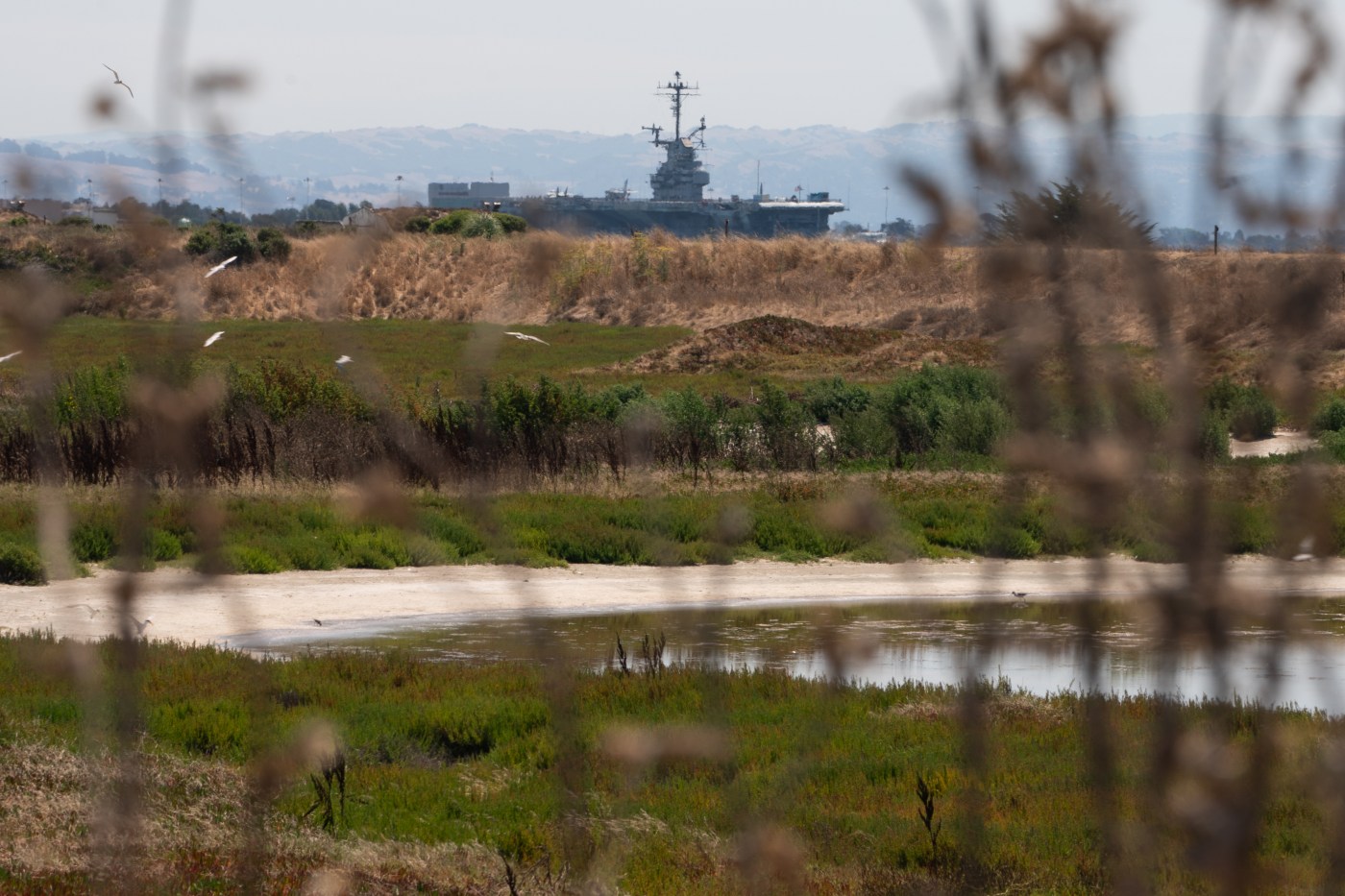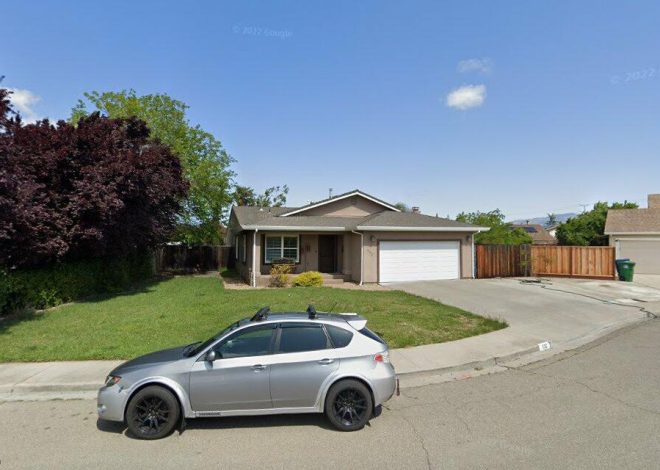
Former Navy base in Alameda draws transportation company startups
The prickly tumbleweed and pesky geese remain at the former Naval Air Station in Alameda, but the sprawling property is now far different from when the military base piped scores of men, machinery and supplies across the Pacific.
From World War II through the Korean conflict and Vietnam, the base supported the Department of the Navy‘s defense mission until it closed in 1997. But these days, many of the former airplane hangars and old military buildings are occupied by transportation startup companies, joining the distilleries, sports clubs and catering companies that have called the base home on and off since the Navy left.
More than a dozen maritime, aviation and space companies have set up shop at the former waterfront base, now called Alameda Point. While there are some homes on the former military installation, a push to add more housing has been stalled amid environmental issues.
Alameda Point appeals to advanced manufacturing businesses in transportation due to its proximity to the Bay Area’s skilled labor force, the large spaces in the former hangars, and the availability of high power from Alameda Power at cheap rates, roughly half the cost of PG&E’s power, according to Abigail Thorne-Lyman, director of base reuse. While advocates say the cluster of transportation companies has sparked innovation, some residents worry the city is not moving fast enough to redevelop the base to accommodate badly needed housing.
Saildrone, which this year was named one of TIME magazine’s 100 Most Influential Companies, leases a massive workspace at Alameda Point, along with companies like Rain and Pyka, autonomous aircraft companies.
A Saildrone floats in the lagoon where the company is leasing a workspace at Alameda Point in Alameda, Calif., on Saturday, Sept. 28, 2024. (Ray Chavez/Bay Area News Group)
“Our company was born here in Alameda. It’s an island, so the access to the water has been essential to us,” said Barak Ben-Gal, the chief financial officer for Saildrone, which develops small robotic sailboats whose sensors gather atmospheric and ocean data that is used in maritime security and for scientific research.
Ben-Gal said the company runs its operations from a 100,000-square-foot former hangar and a 50,000-square-foot old military warehouse. “Trying to convert that to office space would be very difficult. You need something with high ceilings. If it was a one-story office, our drones wouldn’t fit,” he added.
Navier, a startup that has developed the world’s longest-range electric boat, moved to a former Navy storage facility about three years ago. Sam Seder, the company’s head of operations, said the decision was a good one.
“Alameda is a great partner for us; we’ve worked closely with the city and the Alameda Chamber of Commerce,’’ Seder said. “The biggest (perks) are the infrastructure and the space. There is also a strong feeling of innovation out here because there’s a lot of startups.”
For nearly 25 years, the city has planned to redevelop the former base, but full redevelopment has been hampered by land-use constraints, soil and groundwater contamination (the former base is a Super Fund site), environmental requirements and contractual constraints.
Since 2001, the city has entered into development agreements with two master developers — first Alameda Point Community Partners, which planned to sink $2 billion into redevelopment, including building 1,700 homes on the site over 15 years. But four years in, the group pulled out of the project for unspecified reasons. SunCal Companies agreed to sign on as a master developer after that, but after three years, the city terminated the agreement with SunCal.
That’s left residents clamoring for affordable housing in one of the country’s most expensive regions upset. While the city says it still plans to build housing, the timeline is unclear.
Meanwhile, the Navy works on contamination remediation and the city has plans for further developing sections of the base, such as Spirit Alley, where breweries, restaurants and distilleries have set up shop in old buildings.
Tiang Wang, left, takes a selfie with Tony Xu and Aashika Shah after visiting Faction Brewing, one of several brewers at Alameda Point in Alameda, Calif., on Saturday, Sept. 28, 2024. (Ray Chavez/Bay Area News Group)
The city is leasing buildings in areas where the properties still rely on Navy-era infrastructure, and where the Navy still owns buildings that are ready for occupancy but still require some environmental remediation work.
The city is also selling buildings and properties farther to the east, where it has completed new backbone infrastructure, such as new streets, gas and electric, Thorne-Lyman said.
While the current pace of redevelopment has been a boon to transportation companies doing some of the most groundbreaking work in the field, some long-time Alameda residents, who have been waiting to see the former military installation fully developed, said they are running out of patience.
“It’s no secret that the only way for the city to build the necessary new infrastructure at Alameda Point is by selling its property,’’ wrote Richard Bangert, the founder of the Alameda Point Environmental Report blog. “Nevertheless, city leaders drag their feet, unable to let go of the broken strategy of leasing buildings to startup companies. It does not matter how promising or green a business is. Leasing will never pay for infrastructure.”
Bangert said the city has a “lackadaisical approach” for redeveloping Alameda Point and worries that the city will one day ask Alamedans to pass a bond measure to bankroll new infrastructure.
“Companies see a good deal as far as their cost of operations with a lease, and if things don’t work out they can pack up and leave,’’ Bangert said in an interview. “By the city continually focusing on leasing, they are in effect underwriting private companies and I feel the goal should not be replacing jobs, it should be replacing infrastructure. And the only way that can be done is by selling property.”
Related Articles
Santana Row in San Jose lands cosmetics store and top-level restaurant
Long-shuttered SJ Fry’s site poised to become huge tech hub
Amazon’s largest U.S. warehouse is in this California city
World-famous car company sets up new store at Santana Row in San Jose
Bill separating new California warehouses from neighborhoods signed into law
But Thorne-Lyman said it’s important that the city take advantage of the property’s waterfront assets and keep space at Alameda Point for transportation and other companies both now and long term.
“We need to make sure we reserve the appropriate land for these businesses,’’ she said. “They are creating really great-paying middle-skill jobs that don’t require a college degree. For us, creating and retaining those jobs is an important workforce and economic development strategy.”
Thorne-Lyman added that right now the city is focused on making better use of the waterfront piers at Alameda Point. “We think they are an important asset to the transportation industry,’’ she said.
Traffic moves along Midway Avenue at Alameda Point in Alameda, Calif., on Saturday, Sept. 28, 2024. (Ray Chavez/Bay Area News Group)


